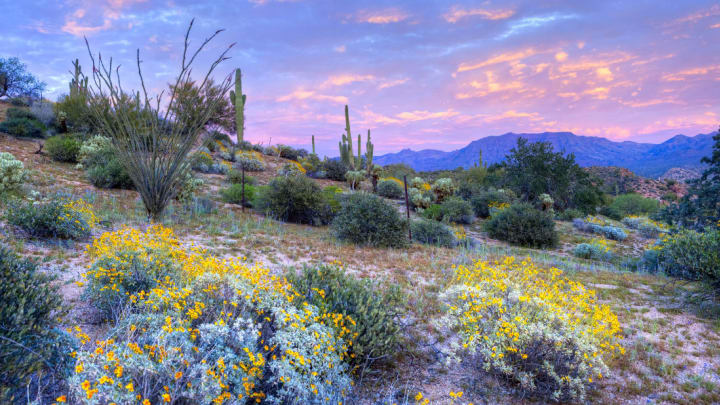Climate change is shifting Earth’s seasons. Winters are getting shorter, and the warmth of spring has started to arrive earlier and earlier, messing with the timing of processes like animal migrations and the budding of new plant growth. In a series of graphics spotted by Flowing Data, the NASA Earth Observatory shows how much earlier new leaves are arriving in some parts of the U.S., and how much earlier they reach full bloom.
The data comes from a 2016 study of U.S. national parks, so the maps only cover seasonal changes within the park system. But since there are so many parks spread across the U.S., it’s a pretty good snapshot of how climate change is affecting the timing of spring across the country. The map in green shows the difference in “first leaf” arrival, or when the first leaves emerge from tree buds, and the map in purple shows the arrival of the first blooms.

Around 75 percent of the 276 parks analyzed in the study have been experiencing earlier springs, and half had recently seen the earliest springs recorded in 112 years. In Olympic National Park in Washington, the first leaves are now appearing 23 days earlier than they did a century ago, while the Grand Canyon is seeing leaves appear about 11 days earlier. National parks in the Sierras and in Utah are seeing leaves appear five to 10 days earlier, as are areas along the Appalachian Trail. Some parks, however, particularly in the South, are actually seeing a later arrival of spring leaves, shown in dark gray in the graphic.

The places that are witnessing earlier first blooms aren't always the ones with extra-early first leaves. The Appalachian Trail is blooming earlier, even though the first leaves aren't arriving any earlier. But in other places, like Olympic National Park, both the first leaves and the first blooms are arriving far earlier than they used to.
“Changes in leaf and flowering dates have broad ramifications for nature,” National Park Service ecologist John Gross explained in the Earth Observatory’s blog. “Pollinators, migratory birds, hibernating species, elk, and caribou all rely on food sources that need to be available at the right time.” When temperatures get out of sync with usual seasonal changes, those species suffer.
[h/t Flowing Data]
